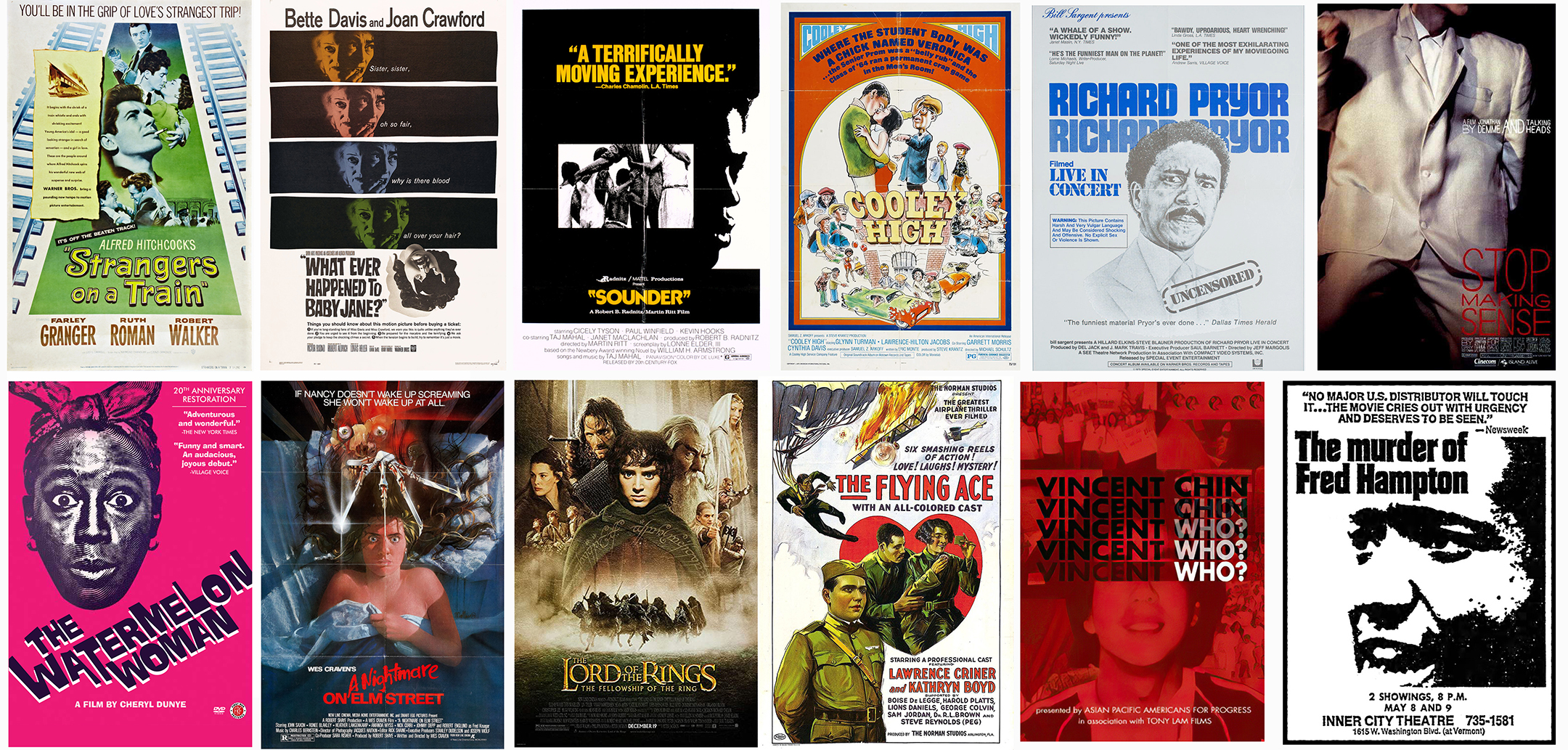
25 Eclectic Films Announced for 2021 National Film Registry Preservation
The Lord of the Rings: The Fellowship of the Ring, Selena, Sounder, Cooley High, A Nightmare on Elm Street and WALL•E among titles selected for preservation — the work of nine ASC members included.
The Lord of the Rings: The Fellowship of the Ring, Selena, Sounder, Cooley High, A Nightmare on Elm Street and WALL•E among titles selected for preservation — the work of nine ASC members included.
Librarian of Congress Carla Hayden announced today the annual selection of 25 influential motion pictures to be inducted into the National Film Registry of the Library of Congress. Selected for their cultural, historic or aesthetic importance to preserve the nation’s film heritage, the newest selections include epic trilogies, major roles for Jennifer Lopez and Cicely Tyson, extraordinary animated features, comedy and music, and films that took on racially-motivated violence against people of color decades ago.
Of note, the 2021 collection includes films shot by nine ASC members: John A. Alonzo, Robert Burks, Jordan Cronenweth, Ernest Haller, Judy Irola, Edward Lachman, Andrew Lesnie, Sandi Sissel and Vilmos Zsigmond.
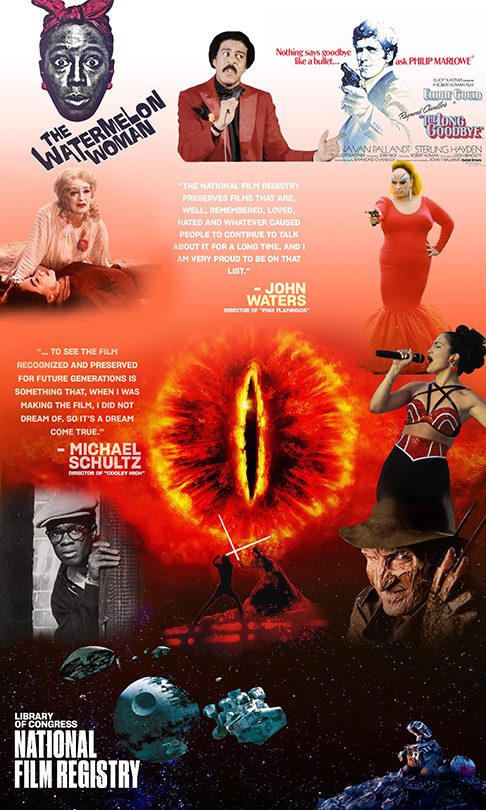
Here are the 25 selected films in chronological order (with cinematographers credited where possible):
Ringling Brothers Parade Film (1902) DoP: Unknown
Jubilo (1919) DoP: Marcel Le Picard
The Flying Ace (1926) DoP: Unknown
Hellbound Train (1930) DoPs: James and Eloyce Gist
Flowers and Trees (1932) Animation
Strangers on a Train (1951) DoP: Robert Burks, ASC
What Ever Happened to Baby Jane? (1962) DoP: Ernest Haller, ASC
Evergreen (1965) DoP: John De Bella
Requiem-29 (1970) DoP: Unknown
The Murder of Fred Hampton (1971) DoP: Howard Alk, Mike Gray
Pink Flamingos (1972) DoP: John Waters
Sounder (1972) DoP: John A. Alonzo, ASC
The Long Goodbye (1973) DoP: Vilmos Zsigmond, ASC, HSC
Cooley High (1975) DoP: Paul Vombrack
Richard Pryor: Live in Concert (1979) DoP: Tom Schamp
Chicana (1979) DoP: Sylvia Morales
The Wobblies (1979) DoPs: Judy Irola, ASC and Sandi Sissel, ASC
Star Wars Episode VI — Return of the Jedi (1983) DoP: Alan Hume, BSC
A Nightmare on Elm Street (1984) DoP: Jacques Haitkin
Stop Making Sense (1984) DoP: Jordan Cronenweth, ASC
Who Killed Vincent Chin? (1987) DoP: Kyle Kibbe
The Watermelon Woman (1996) DoP: Michelle Crenshaw
Selena (1997) DoP: Edward Lachman, ASC
The Lord of the Rings: The Fellowship of the Ring (2001) DoP: Andrew Lesnie, ASC, ACS
WALL•E (2008) Animation DoPs: Jeremy Lasky, Danielle Feinberg
(You’ll find our report on the 2020 Film Registry list here, and 2019 here.)
The Library of Congress release further notes:
The 2021 selections represent one of the most diverse classes of films to enter the registry, with movies dating back nearly 120 years and representing the work of Hollywood studios, independent filmmakers, documentarians, women directors, filmmakers of color, students and the silent era of film. The selections bring the number of films in the registry to 825, representing a portion of the 1.7 million films in the Library’s collections.
“Films help reflect our cultural history and creativity — and show us new ways of looking at ourselves — though movies haven’t always been deemed worthy of preservation. The National Film Registry will preserve our cinematic heritage, and we are proud to add 25 more films this year,” said Librarian of Congress Carla Hayden. “The Library of Congress will work with our partners in the film community to ensure these films are preserved for generations to come.”
Turner Classic Movies (TCM) will host a television special Friday, Dec. 17, starting at 8 p.m. ET to screen a selection of motion pictures named to the registry this year. Hayden will join TCM host and film historian Jacqueline Stewart, who is chair of the National Film Preservation Board, to discuss the films. Also, select titles from 30 years of the National Film Registry are freely available online in the National Screening Room.

Two films selected for the registry drew significant public support this year through online nominations. The original Star Wars trilogy’s third release from “a galaxy far, far away” in 1983 drew the most public votes for Star Wars Episode VI — Return of the Jedi, while the kickoff to another epic trilogy of films, The Lord of the Rings: The Fellowship of the Ring from 2001, based on the beloved stories of J.R.R. Tolkien, also earned strong public support.
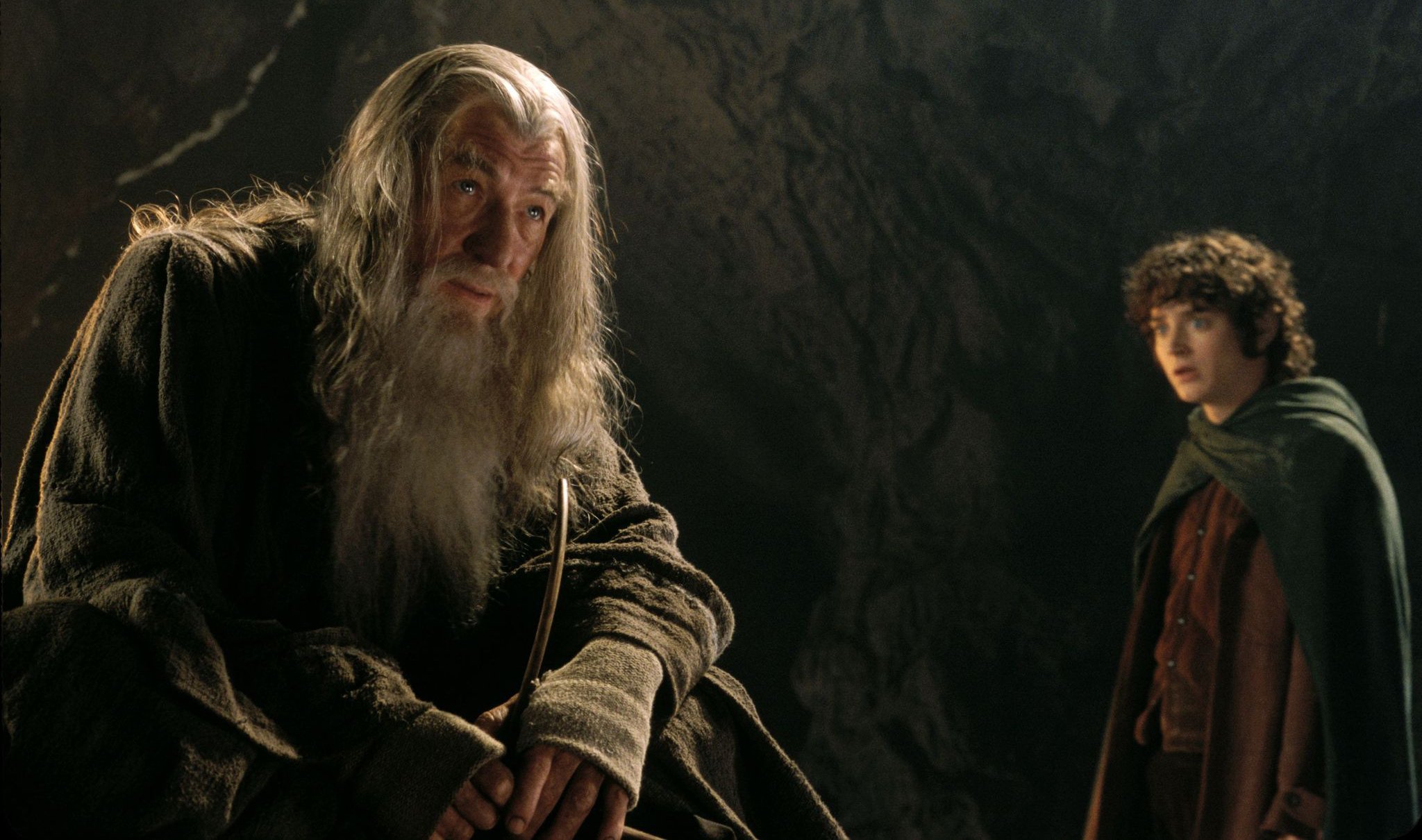
“In 1951, Professor Tolkien expressed the wish that ‘... other minds and hands, wielding paint and music and drama...’ might one day come to the world of middle-earth. And they did — actors and artists, composers and musicians, linguists and digital wizards — a myriad of talent came together to bring his vast work of imagination to life on the screen,” said the filmmaking team of Peter Jackson, Fran Walsh and Philippa Boyens. “It is a great honor to have The Lord of the Rings: The Fellowship of the Ring selected this year by the National Film Registry. We are proud to be part of an archive that celebrates and preserves the art of visual storytelling, for generations to come.”
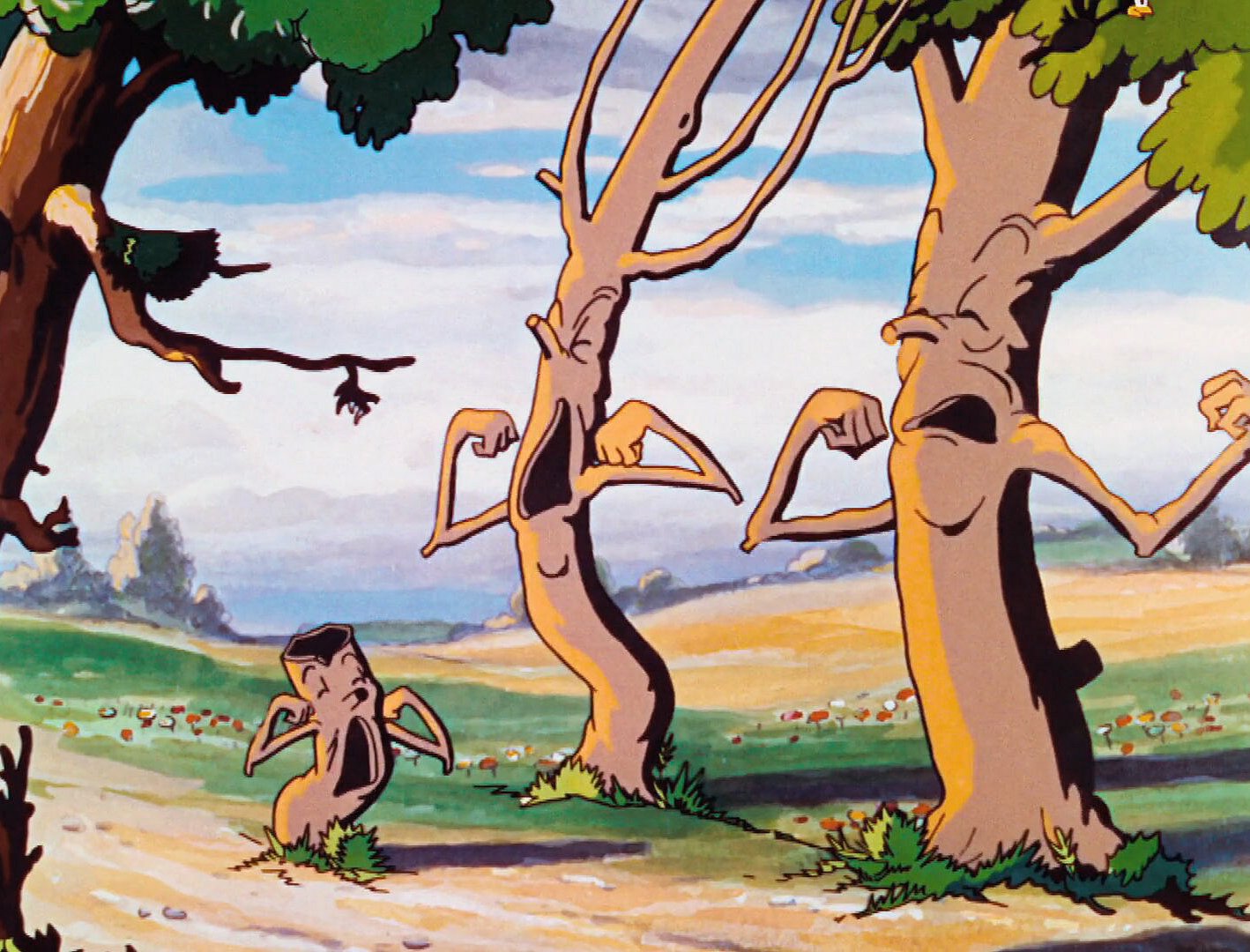
Two innovative animated features from different eras also join the registry this year. Disney’s Flowers and Trees, which was released in the dark days of the Great Depression in 1932, showcased the magic of cinema with birds singing and trees in full color. It was the first three-strip Technicolor film shown to the public and set a new standard.
Some 76 years later, Pixar Animation Studios would release a unique masterpiece with 2008’s WALL•E,combining animation, science fiction, an ecological cautionary tale and a charming robot love story. The film would go on to win the Oscar for Outstanding Animated Feature.

Reflecting a Diverse Nation
Several films explore stories from the nation’s diverse communities that often carry universal themes. Selena, the 1997 biographical film of Tejana star Selena Quintanilla-Pérez, starred Jennifer Lopez, in her first major movie role, and Edward James Olmos. Directed by Gregory Nava, it told the story of the young singer’s rise to fame in her family band and her tragic death, at 23, when she was shot to death by the head of her fan club after a dispute. Selena’s life, music and the film became touchstones in Latin American culture, and her infectious appeal crossed over to audiences of all kinds.

Olmos, who played Abraham, the father and manager of the band, said the movie stands out as a universal family story that happens to be about Mexican-Americans along the Texas-Mexico border. “It will stand the test of time,” Olmos told the Library. “(It’s) a masterpiece because it allows people to learn about themselves by watching other peoples’ culture.”
In the 1970s, Michael Schultz was a young director when he was brought on to direct Cooley High, a touching 1975 comedy about a group of Black friends enjoying their last year of high school in the Cabrini Green neighborhood in Chicago. Affectionate, rowdy and innocent about teenage life, it stood in contrast to the Blaxploitation movies of the era. This year, Cooley joins the registry as well.
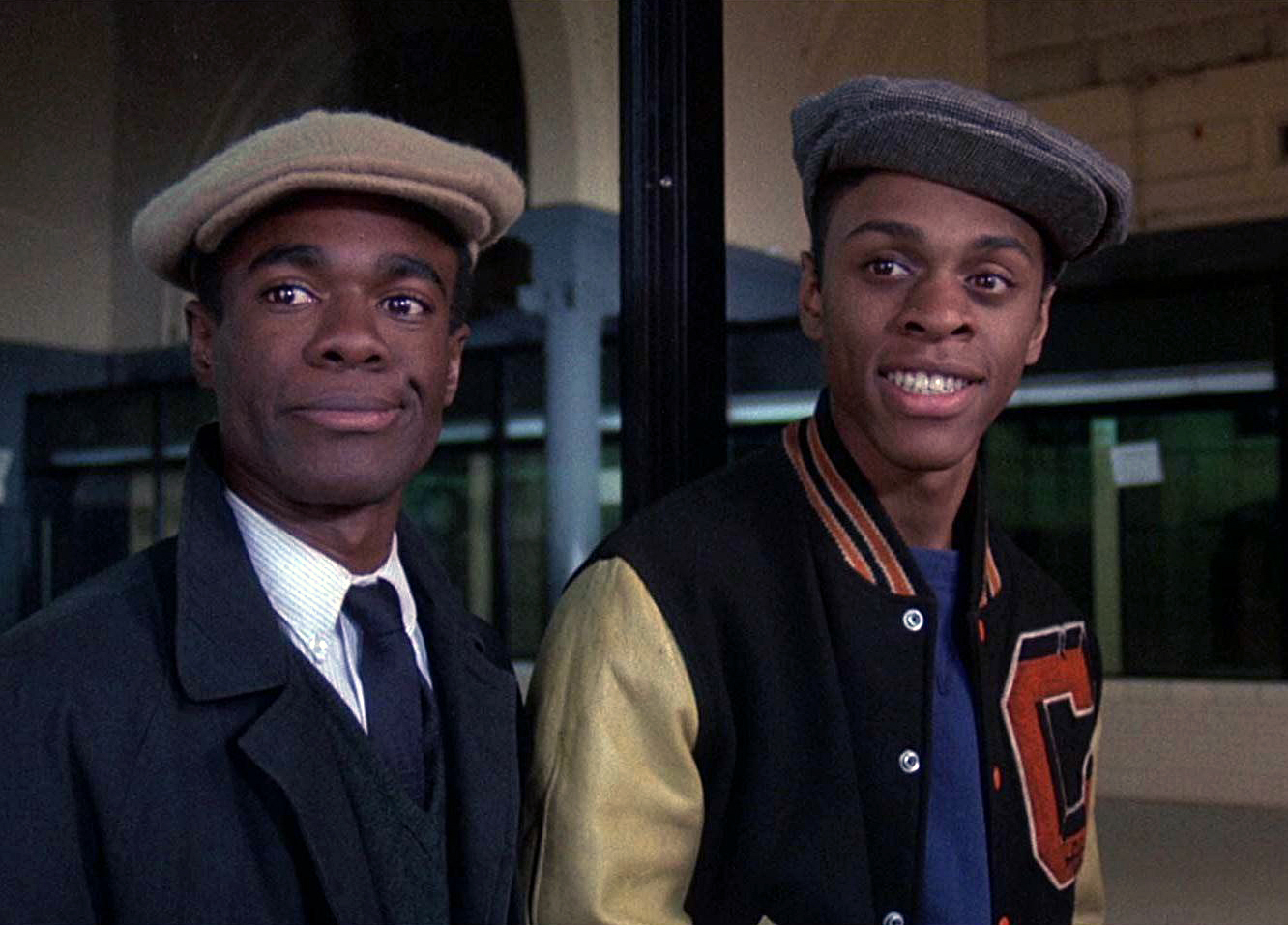
Despite a tight budget and shooting schedule, the movie caught on with audiences and remains a time-capsule portrait of teenagers coming of age in a difficult place. It’s been called a classic of Black cinema. Schultz said he never doubted the film’s potential. “The one thing I knew about Cooley High was that it was unique, it was exciting,” he said. “It would open up people to a new world.”
California-based director Sylvia Morales was incredulous when she got the call that her 1979 documentary Chicana, was included on this year’s registry class. “Initially, I didn’t believe it,” she said.
Chicana is a 22-minute collage of artworks, still photographs and documentary footage about the struggles of Chicana women over the long course of history and the work they have put in to gain basic rights and wages. That film, and her subsequent career, grew out of Morales’ youthful desire to see people like her on the silver screen. “I loved the movies, and so I decided early on, when I was a teenager, that I was going to make some movies and put some Mexicans in it,” she said. “I think it's the struggle that's important, and that's what Chicana is. It's the struggle to be whoever you are."
Filmmakers Address Racially-Motivated Violence
Three films included on this year’s list directly addressed one of the most pressing issues of the day: racially-motivated violence against people of color. The Murder of Fred Hampton from 1971, Who Killed Vincent Chin? from 1987, and Requiem-29 from 1970 told stories of violence against Black, Asian and Hispanic Americans, respectively. These films are particularly important to preserve, said Stewart, who is chief artistic and programming officer at the Academy Museum of Motion Pictures. “We strive to look at the range of films, those that are entertaining and inspiring, but also those films that raise more difficult questions, titles that get us to recognize that films are documents of our complex social and political history and that their preservation is absolutely essential if we're going to look honestly at our past,” Stewart said.
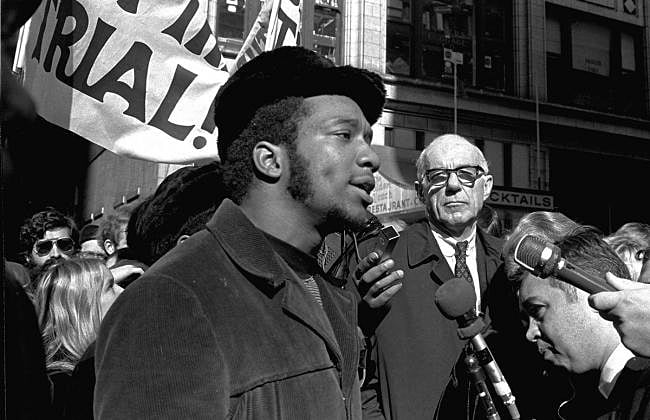
Taking the three films together — all made decades ago, but just as relevant now as then — “help us to see just how powerful cinematic representations of these issues can be, because films not only document social problems but they can also be catalysts for change."
Silent Films that Challenged Stereotypes
The oldest film in this year’s registry class is a recently restored 3-minute actuality recording from 1902 showing a Ringling Brothers circus parade in Indianapolis. One reason why the film was selected for preservation is it also shows, by accident, a rare glimpse of a prosperous northern Black community at the turn of the 20th century. African Americans were rarely shown in films of that era and then only in caricature or mocking depictions.
Two more silent films from the early 20th century selected this year also portray Black Americans without the degrading stereotypes common to the era.
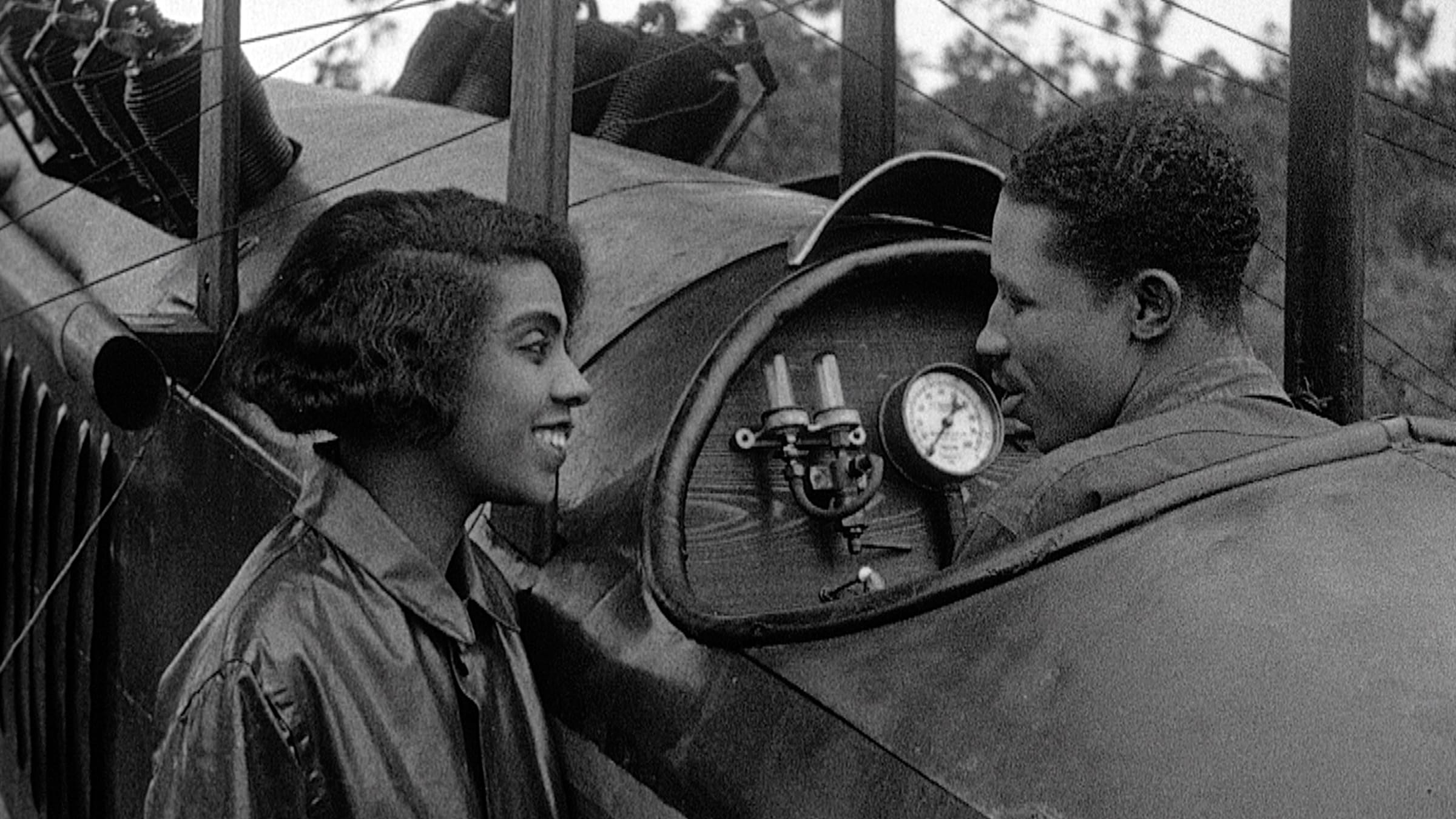
The Flying Ace, from 1926, is a straightforward romance set in the daring new world of aviation. It was made by the Norman Film Manufacturing Company of Jacksonville, Florida, an important producer of “race films” — movies made specifically for Black audiences. Although owned by Richard Norman, a white man, the studio’s films tended to portray a world in which whites, and thus racism, was absent.
“The Flying Ace is a really special film because it represents Black technical expertise and bravery,” said Stewart. “It has been said that future Tuskegee Airmen were inspired when they saw this film in their youth.”
The fact that it was also so successful with audiences, she said, helps document that there was a “thriving African American movie culture during the 1920s, ‘30s and ‘40s. It’s miraculous, considering how few prints of these films were made, that this film survives.”
Hellbound Train, a silent film from 1930, is a staunchly Christian film, made by the evangelical couple of James and Eloyce Gist. Until recently, it was an overlooked milestone in Black cinema and now joins the registry. Its obvious plot — the Gists were amateur filmmakers, using untrained actors — was to scare sinners straight. It was played in churches and fairgrounds to accompany the Gists’ sermons.
It depicts a train with each car dedicated to particular sins — dancing, drinking, adultery — being conducted by Satan himself. The print was painstakingly reassembled from more than 100 reels of 16mm at the Library by filmmaker S. Torriano Berry, preserving this early example of guerilla filmmaking carried out with a missionary zeal.
In 2013, the Library released a report that determined 70 percent of the nation’s silent feature films have been lost forever and only 14 percent exist in their original format.
In Focus: The 2021 National Film Registry
(alphabetical order)
Chicana (1979)
Producer/director Sylvia Morales created Chicana, a 22-minute collage of artworks, stills, documentary footage, narration and testimonies, to provide a counterpart to earlier film accounts of Mexican and Mexican-American history that all but erased women’s lives from their narratives. Centering on successive struggles by women from the pre-Columbian era to the present to combat exploitation, break out of cultural stereotypes, and organize for national independence, women’s education, and the rights of workers, Chicana resurrects an arresting array of proto-feminist icons to inspire Chicana feminists with role models from their cultural past. In 1977, Morales, an artist and cinematographer who had worked at KABC in Los Angeles and was enrolled in UCLA’s film school, became enthralled with a slide show created by Chicano Studies teacher Anna Nieto-Gómez that included a history of Mexican women of which Morales was unaware. With Nieto-Gómez’s support, Morales conducted additional research with Cynthia Honesto, hired composer Carmen Moreno to score the film and renowned actress Carmen Zapata to narrate it, shot documentary footage, and recorded interviews with Chicana activists Dolores Huerta, Alicia Escalante, and Francisca Flores to incorporate as voice-overs into the film. Acknowledged as a brilliant and pioneering feminist Latina critique, Chicana has served as a stepping stone for Morales’ distinguished career as a writer and director of acclaimed cable and public television documentary and fiction productions. UCLA has digitally scanned the best surviving picture sources for interim preservation purposes and hopes to turn this provisional work into a full restoration effort.
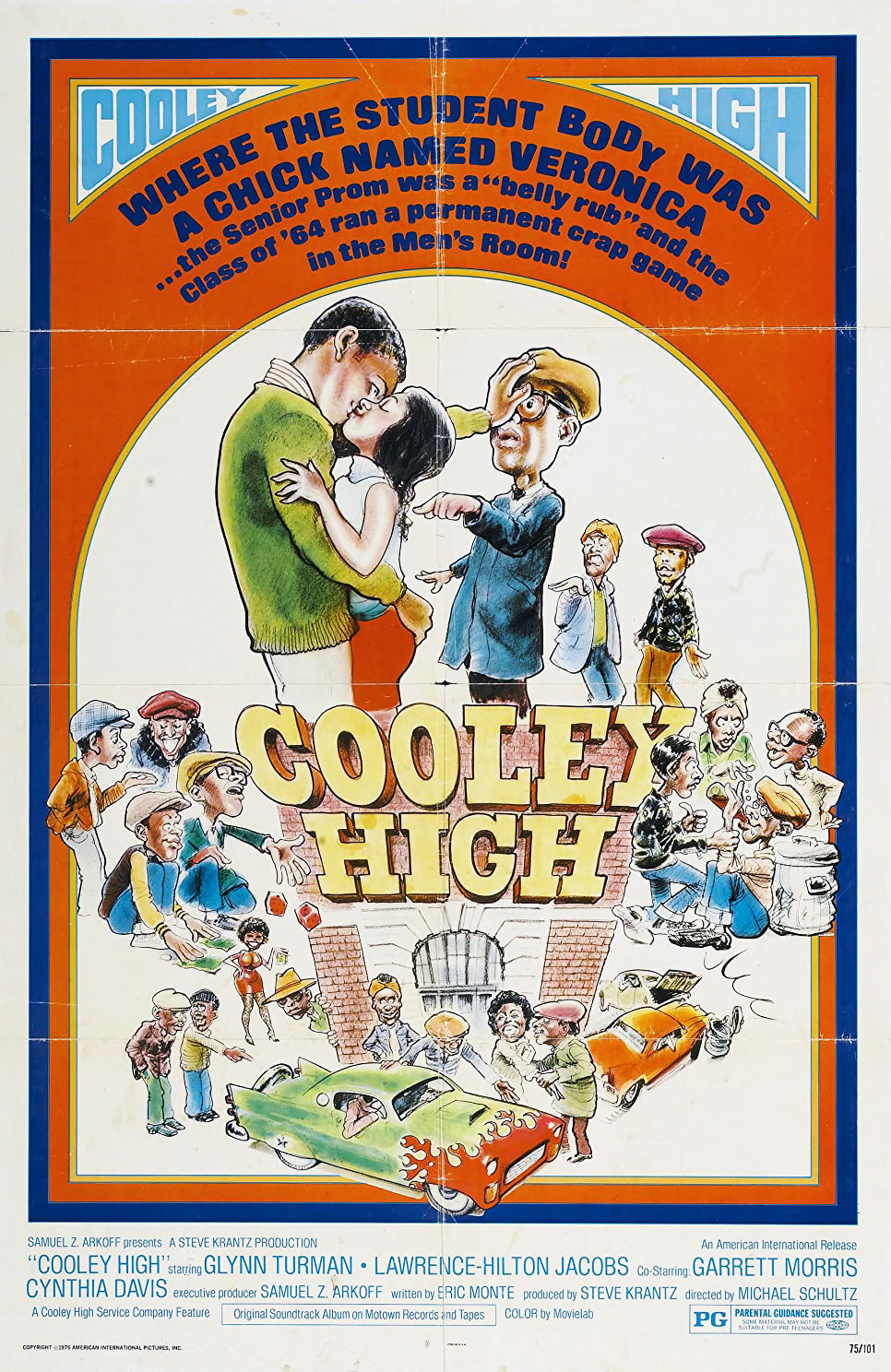
Cooley High (1975)
NPR has called Cooley High a “classic of black cinema” and “a touchstone for filmmakers like John Singleton and Spike Lee.” Set in Chicago’s Cabrini Green housing project, Cooley is — at least at its start — a coming-of-age comedy about African American friends making the most of their halcyon high school days. But they soon find their lives and futures threatened when a small scuffle at a party escalates and projects them into a series of legal jeopardies. Though often compared to 1973’s American Graffiti, Cooley stands beautifully on its own thanks to its unique sensibilities, the taut direction of Michael Schultz and the incredible naturalistic acting styles of its entire cast — which included Lawrence Hilton-Jacobs, Garrett Morris and Glynn Turman. Made on a small budget, Cooley would become one of the biggest critical and commercial successes of 1975. Retooled, Cooley High would also serve as the genesis for the successful TV sitcom What’s Happening!!
Evergreen (1965)
Before co-founding The Doors and the band learning their craft in Los Angeles clubs such as London Fog and Whisky a Go, Ray Manzarek attended UCLA’s Film School, where he met fellow film student Jim Morrison. While at UCLA, credited as Raymond D. Manzarek, he created the student film Evergreen, about a jazz musician (Henry Crismonde) and his romance with an art student (played by Manzarek’s then girlfriend and future wife Dorothy Fujikawa). Manzarek was always a huge fan of the potential of cinema. He once noted, “Film is the art form of the 20th century, combining photography, music, acting, writing, everything. Everything that I was interested in all came together with that one art form.” In Evergreen, which has been called a “12-minute, West Coast, cool jazz, cinematic tryst,” one can definitely spot the influence of the French New Wave and filmmakers such as Jean Luc Godard. The film’s title reportedly comes from the Beat literary magazine, The Evergreen Review, and Evergreen features music by Herbie Mann/The Bill Evans Trio and the Jazz Crusaders. The location shots of mid-1960s Los Angeles comprise a magical time capsule of their own. Fujikawa sums up the impact of film on Manzarek and Morrison: “I think film informed his work and Jim’s work throughout their musical careers,” she said. “They always thought of their songs as cinematic expressions. They were always sort of little stories that were dramatic and told a story with music. In that way they were cinematic songs.” The film has been digitally restored by the UCLA Film and Television Archive.
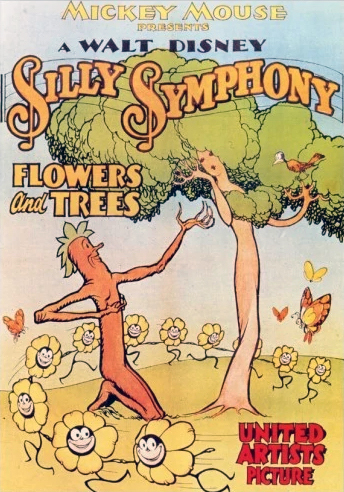
Flowers and Trees (1932)
In the darkest days of the Great Depression, audiences welcomed a diversion when they went to theaters. Studios responded with Busby Berkeley musicals, risqué pre-Code films and trippy animations such as the Fleischer Studios’ Betty Boop cartoons. Those attending the 1932 premiere of Disney’s Flowers and Treeswatched birds singing and trees awakening, all in spectacular hues: Flowers and Trees was the first three-strip Technicolor film shown to the public, and the dawning of a new era. The overwhelming response convinced Walt Disney to make all future Silly Symphony shorts in color and a few years later came features like Snow White and the Seven Dwarfs. Even today, the hand-drawn animation and vibrant Technicolor continues to charm and dazzle, showing new audiences the magic cinema can bring.
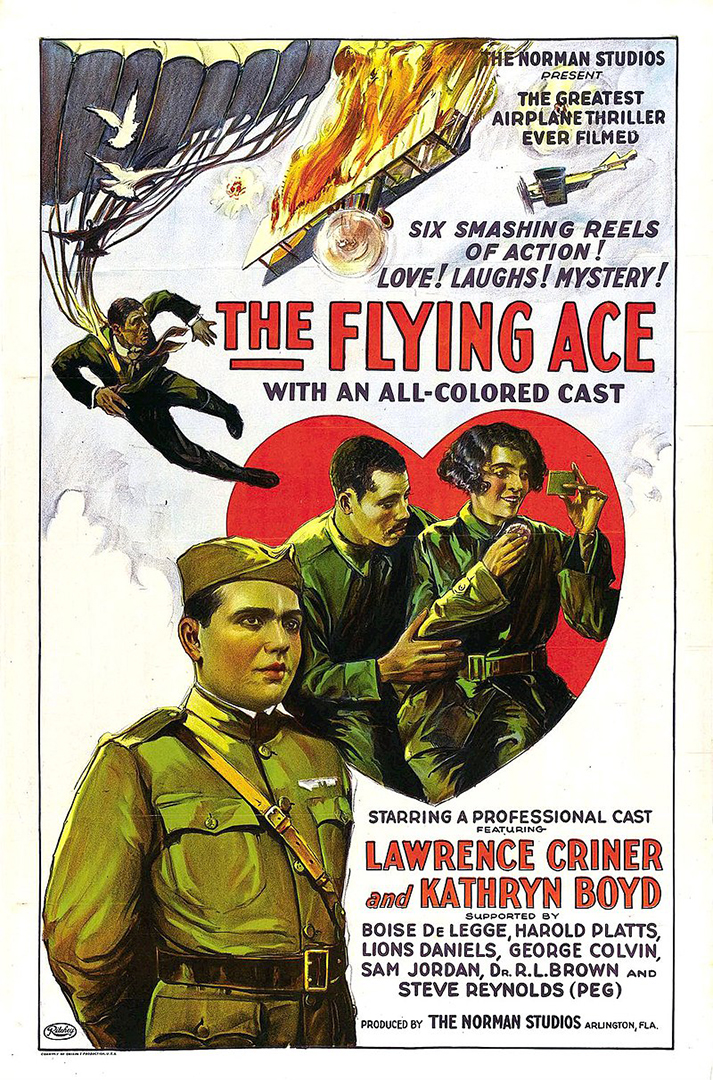
The Flying Ace (1926)
The Norman Film Manufacturing Company of Jacksonville, Florida, was an important producer of “race films,” movies made specifically for Black audiences. Although owned by Richard Norman, a white man, the studio’s films tended to portray a world in which whites, and thus racism, was completely absent and Black relationships are at the center of the story. The Flying Ace is an excellent example, a romance-in-the-skies drama with a compelling cast, including Kathryn Boyd playing a character inspired by Bessie Colman, the first African American woman pilot.
Hellbound Train (1930)
This surreal and mesmerizing allegorical film by traveling evangelists James and Eloyce Gist is an important and, until recently, overlooked milestone in Black cinema. Painstakingly reassembled from more than 100 reels of 16mm at the Library of Congress by filmmaker S. Torriano Berry, this early example of independent community filmmaking is a fierce and entertaining condemnation of sinfulness with Satan portrayed as a tempting conductor. The Gists showed this silent film in Black churches accompanied by a sermon and religious music.
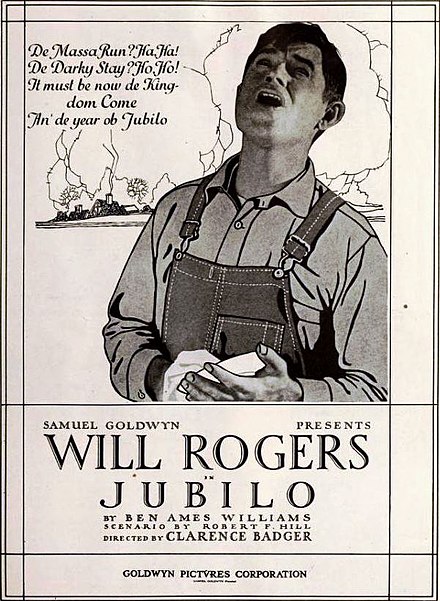
Jubilo (1919)
In the third film of his illustrious motion picture career, humorist and cowboy philosopher Will Rogers enacted the easy-going, likable tramp Jubilo, named after a Civil War song in which enslaved people using stereotypical dialect celebrate their hoped for emancipation. Theater organists and pianists no doubt played the tune repeatedly throughout the picture, and for years afterwards, it became a signature song for Rogers, a multiracial member of the Cherokee nation who often portrayed a comic trickster common in both African American and Native American cultures. Despite its predictable plot, Jubilo was distinguished by the uniquely human character Rogers created and the title cards he authored that gave national audiences a taste of the topical remarks he would casually toss off from the stage as he entertained New York audiences with his roping and horseback riding tricks. One card, appearing after his character spends a night trying to fix an automobile, satirizes Henry Ford’s recently unsuccessful political ambitions with the line, “No wonder he wasn’t elected to the Senate with everyone owning one of these.” Reviewers praised Rogers’ “wonderfully natural creation” and “rugged sense of humor,” and a few years later, director Erich von Stroheim commended Rogers’ pictures for their character-driven realism, a desired quality he found otherwise lacking in most of Hollywood’s more plot-dominated productions. The film is preserved by the Museum of Modern Art.
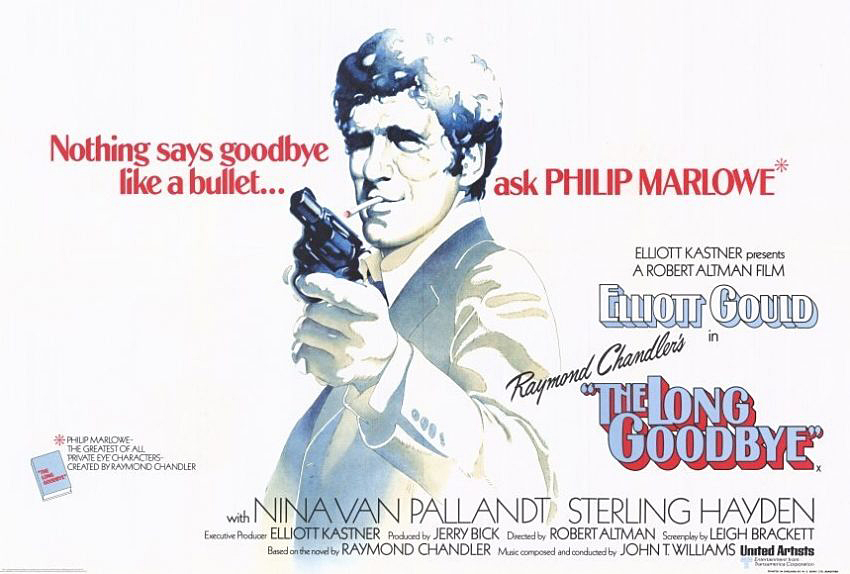
The Long Goodbye (1973)
In The Long Goodbye, Elliott Gould, star of such counterculture classics as M*A*S*H* and Little Murders, brings Raymond Chandler’s iconic depression-era detective Philip Marlowe into a contemporary Hollywood-infused setting where his moral compass seems anachronistic. Robert Altman directed this richly complex, iconoclastic and highly entertaining detective mystery with a script by Leigh Brackett, who had co-authored the screenplay of the film noir classic The Big Sleep, in which Humphrey Bogart epitomized Chandler’s hard-nosed individualist hero for an earlier generation. The inspired, non-traditional cast, some of whom Altman encouraged to create their own characters and lines, includes Sterling Hayden, Jim Bouton, Nina van Pallandt, Mark Rydell and Henry Gibson. Shot by pictorially-inclined cinematographer Vilmos Zsigmond near the beginning of his illustrious career, The Long Goodbye employs unsettling, ever-moving camerawork and compositions that masterfully utilize the transparent and reflective surfaces common in southern California modernist architecture. Altman and Zsigmond’s technique allows viewers to eavesdrop on a corrupt world of trivial pursuits and shocking violence that has left many of its inhabitants impotent, indifferent or deeply scarred. Gould’s repeated signature line, “It’s OK with me,” resonates throughout until Chandler’s shining knight ends the film with a morally ambiguous resolution. Zsigmond won the National Society of Film Critics’ award for best cinematographer for his work in The Long Goodbye.

The Lord of the Rings: The Fellowship of the Ring (2001)
Director Peter Jackson kicked off his epic trilogy of films of J.R.R. Tolkien’s beloved oeuvre with this 2001 film. From its visually stunning depiction of Middle-Earth to his large, expert, all-star casting (Elijah Wood, Ian McKellen, Liv Tyler, Viggo Mortensen, Sean Astin, Cate Blanchett, Hugo Weaving, John Rhys-Davies, Orlando Bloom, Christopher Lee and Andy Serkis), Jackson and company created a respectful, literate adaptation of one of the world’s most cherished series of written works. Key to making all this magic work and the story of Hobbits surprisingly human are the heartfelt performances (led by Wood as Frodo and McKellen as Gandalf). The combination of magnificent production values and scenes filmed in spectacular New Zealand locations made this a must-see, particularly on wide screens in a cinema.
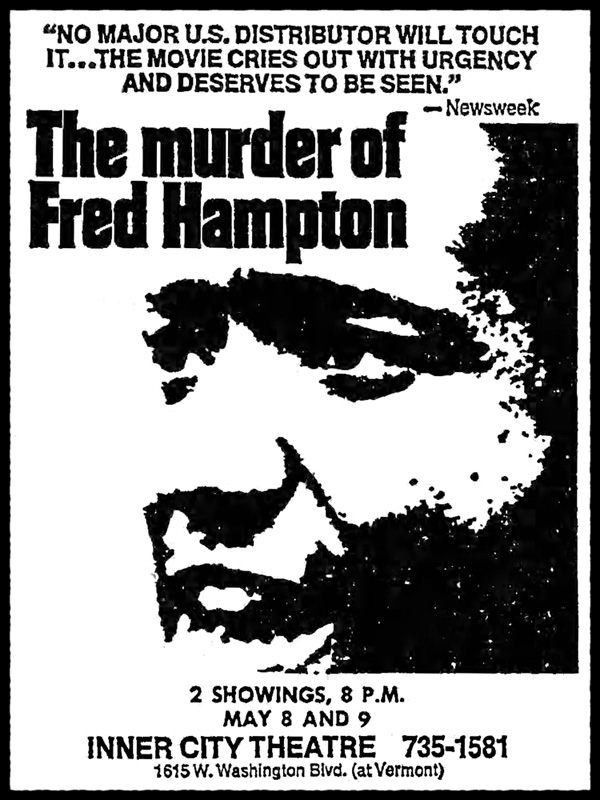
The Murder of Fred Hampton (1971)
This documentary profiles the final year in the life of Fred Hampton, the 21-year old charismatic leader of the Illinois chapter of the Black Panther Party. The first half shows Hampton making speeches, passionately urging armed militancy, as well as non-violent advocacy, to confront poverty, protest police brutality and build coalitions to broaden the message of the party from “Power to the People” to “All power to all people.” During production, Hampton and Mark Clark were killed in a police raid, and the film transitions to an investigation of their deaths and the motives of authorities local and beyond. The New York Times, while admitting the film had flaws and certainly was unabashedly biased, assesses that the footage and TV documentation “constitute a remarkable, if uneven, case history. It is, in sum, an unleavened indictment of Edward V. Hanrahan, the Illinois state's attorney, the policemen in the raid and the Chicago political establishment. The film was restored by the UCLA Film and Television Archive.
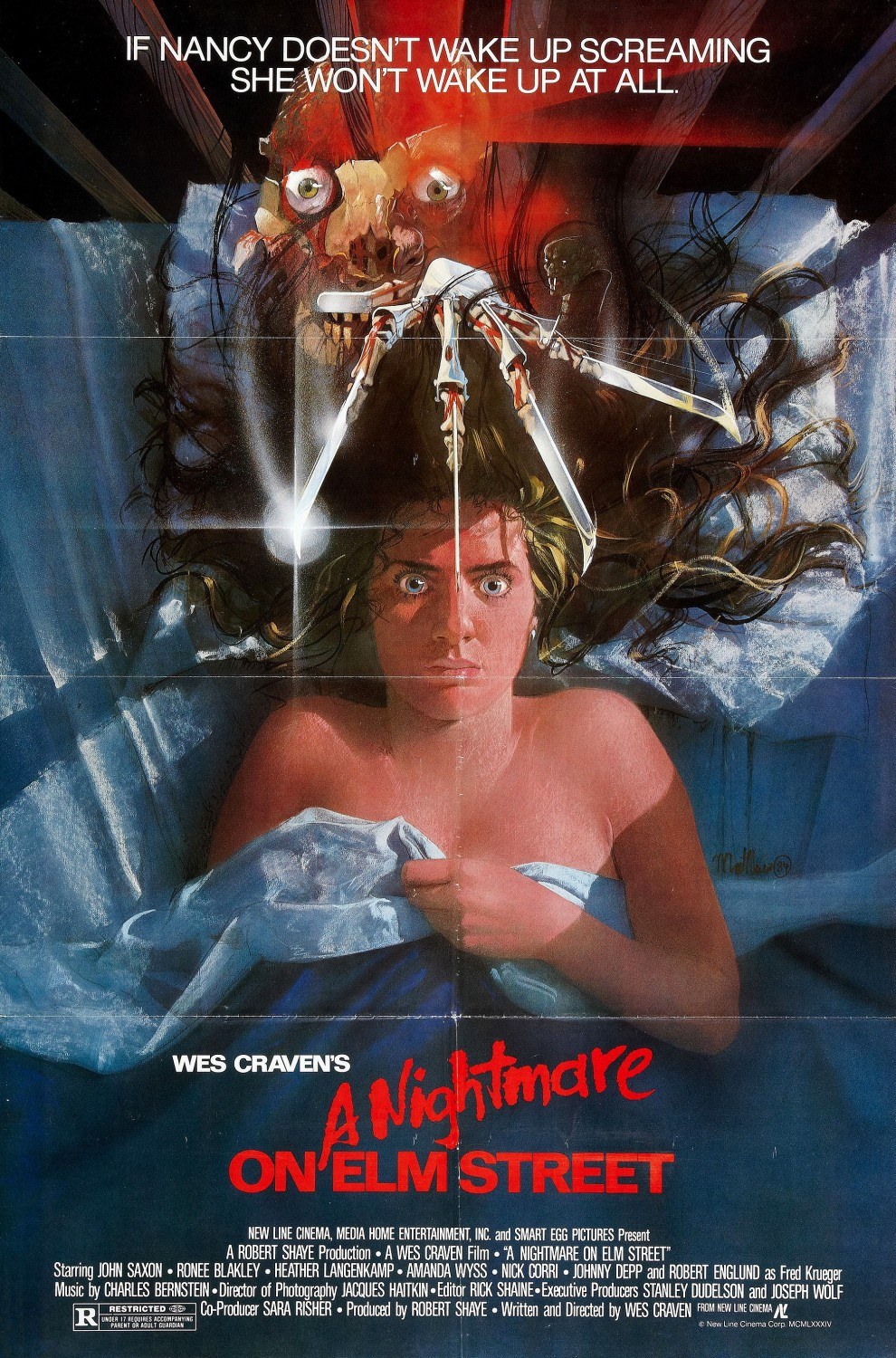
A Nightmare on Elm Street (1984)
The great horror maestro Wes Craven, as both writer and director, gave a generation of teens (of all ages) terminal insomnia with this imaginative and intense slasher scare fest. Freddy Krueger (played by soon-to-be legend Robert Englund) is the burn-scarred ghost of a psychopathic child killer, now returned to haunt your dreams and take his revenge! Heather Langenkamp stars as the heroic Nancy, who figures out who Freddy is and must be the one to stop him. Also in the cast: Johnny Depp, John Saxon, Ronee Blakley and Charles Fleischer. Made on a budget under $2 million, Elm Street became a box office sensation and has inspired numerous sequels (including a film that pitted Freddy against Jason of the Friday the 13th films), a 2010 remake, a TV series, books, comic books and videogames, making it one of the most successful film franchises in the history of any cinematic genre. The film established New Line Cinema as a major force in film production with some calling New Line “The House That Freddy Built.”
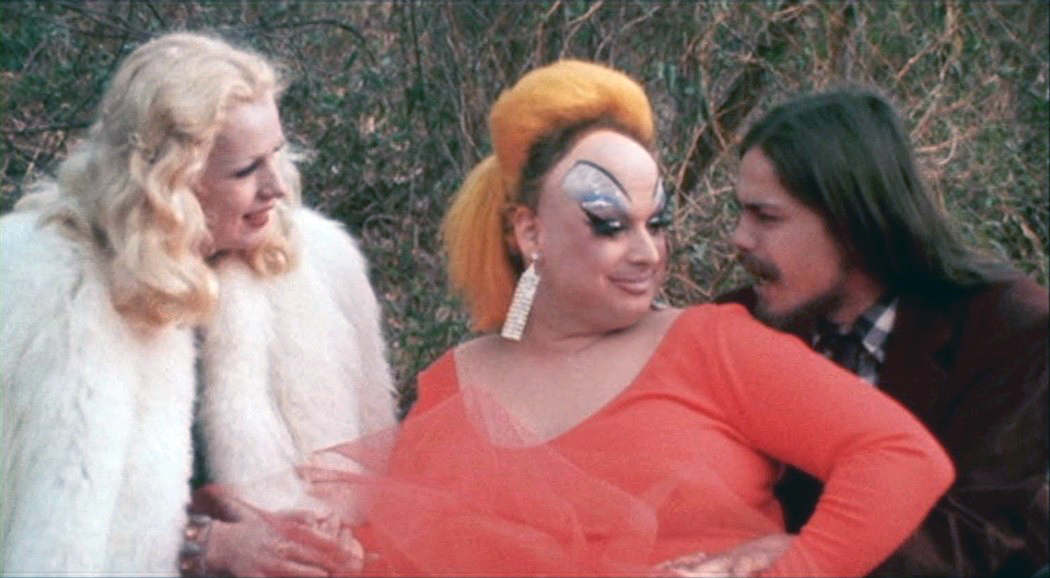
Pink Flamingos (1972)
The movie poster tells the story: drag icon Divine, resplendent in a red gown, hair and makeup at glorious extremes, perched on a cloud and brandishing a pistol, beneath the tagline “An Exercise in Poor Taste.” Baltimore favorite son John Waters’ delirious fantasia centers on the search for the “filthiest person alive” and succeeds, but not before having a lot of outrageous fun along the way. This cult classic has been embraced by a generation of filmmakers and is considered a landmark in queer cinema.
Requiem-29 (1970)
UCLA's Ethno-Communications Program's first collective student film had intended to capture the East Los Angeles Chicano Moratorium Against the War in Vietnam, Aug. 29, 1970, but the film turns into a requiem for slain journalist and movement icon, Ruben Salazar. The film shows footage of the march, the brutal police response and resulting chaos interspersed with scenes from the rather callous and superficial inquest. Filmmakers attached to the project have confirmed that the original elements for the film disappeared over 40 years ago. The UCLA Film and Television Archive has facilitated a 4k scan of the surviving faded 16mm print for preservation purposes and hopes to turn this provisional work into a full restoration effort.
Return Of The Jedi (1983) aka Star Wars: Episode VI - Return of the Jedi
The original Star Wars trilogy reached its first apex with this film, the third release in the “a galaxy far, far away” trifecta. Directed by Richard Marquand, from a story by, of course, George Lucas, Jedi launches Lucas’ original, legendary characters — Luke, Leia, Han Solo, C-3PO, R2-D2 and others — on a series of new adventures, which takes fans from the planet of Tatooine to the deep forests of Endor. Populated by intriguing new characters — including Ewoks and the gluttonous Jabba the Hutt — and filled with the series’ trademark humor, heart, thrills and chills, Jedi, though perhaps not quite up to the lofty standards of its two predecessors, still ranks as an unquestioned masterpiece of fantasy, adventure and wonder.
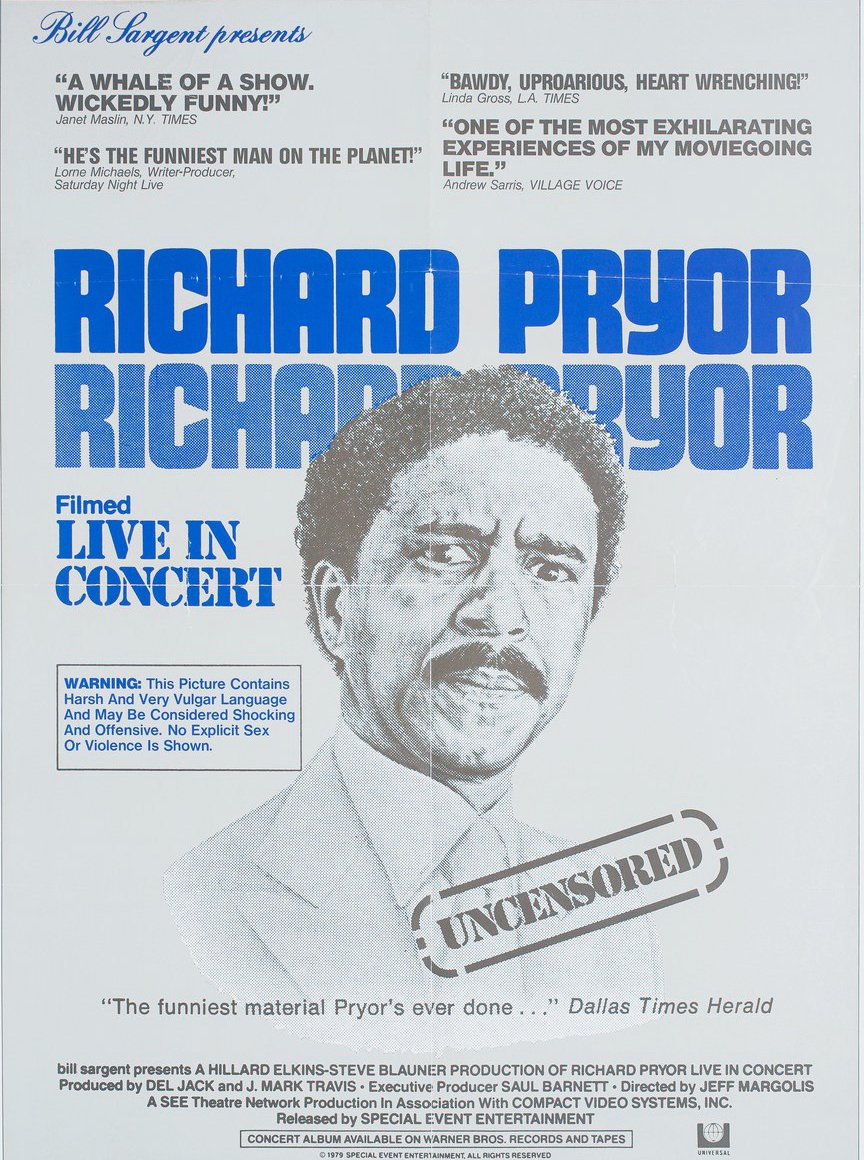
Richard Pryor: Live in Concert (1979)
Very few other stand-up comedy stars had ever taken their sets to the big screen and presented themselves and their comedic vision so fully, and in a manner so raw, so unadorned, and unedited. The great Richard Pryor did it four times. This riotous performance, recorded at the Terrace Theatre in Long Beach, California, is quintessential Richard Pryor: shocking, thought-provoking, proudly un-PC and, undeniably hilarious. Already, a legend in the world of stand-up comedy, this film — as straightforward in its title as Pryor is in his delivery — cemented Pryor’s status as a comedian’s comedian and one of the most vital voices in the history of American humor.
Ringling Brothers Parade Film (1902)
Recently restored by the Niles Essanay Silent Film Museum, this 3-minute actuality recording of a circus parade in Indianapolis in 1902 accidentally provides a rare glimpse of a prosperous northern Black community at the turn of the century. African Americans rarely appear in films of that era, and then only in caricature or as mocking distortions through a white lens. Actuality films indelibly capture time and place (fashions, ceremonies, locations soon to disappear, behavior at large events and the key daily routines of life), sometimes unexpectedly so as in this delightful gem.

Selena (1997)
In her first major film role, Jennifer Lopez’s performance in Selena captures the talent, beauty, youthful spirit and many of the reasons why Selena Quintanilla-Pérez was so beloved and on her way to becoming one of the biggest stars in the world. Already the first and most successful female Tejana music singer, Selena’s growing popularity in both Mexican and American music and fashion paved the way for many of today’s biggest pop stars, including Jennifer Lopez herself. Directed and written by Gregory Nava, Selena is the official autobiographic film authorized by the Quintanilla family. Selena’s father, Abraham Quintanilla, serves as a producer and is played by Edward James Olmos in the movie. Olmos has said that there were moments on the set when Selena’s father would excuse himself and quietly cry in the corner because of the fresh emotions of her death and because many events were so accurately portrayed. The final montage of the movie features real footage and photos of Selena’s life.
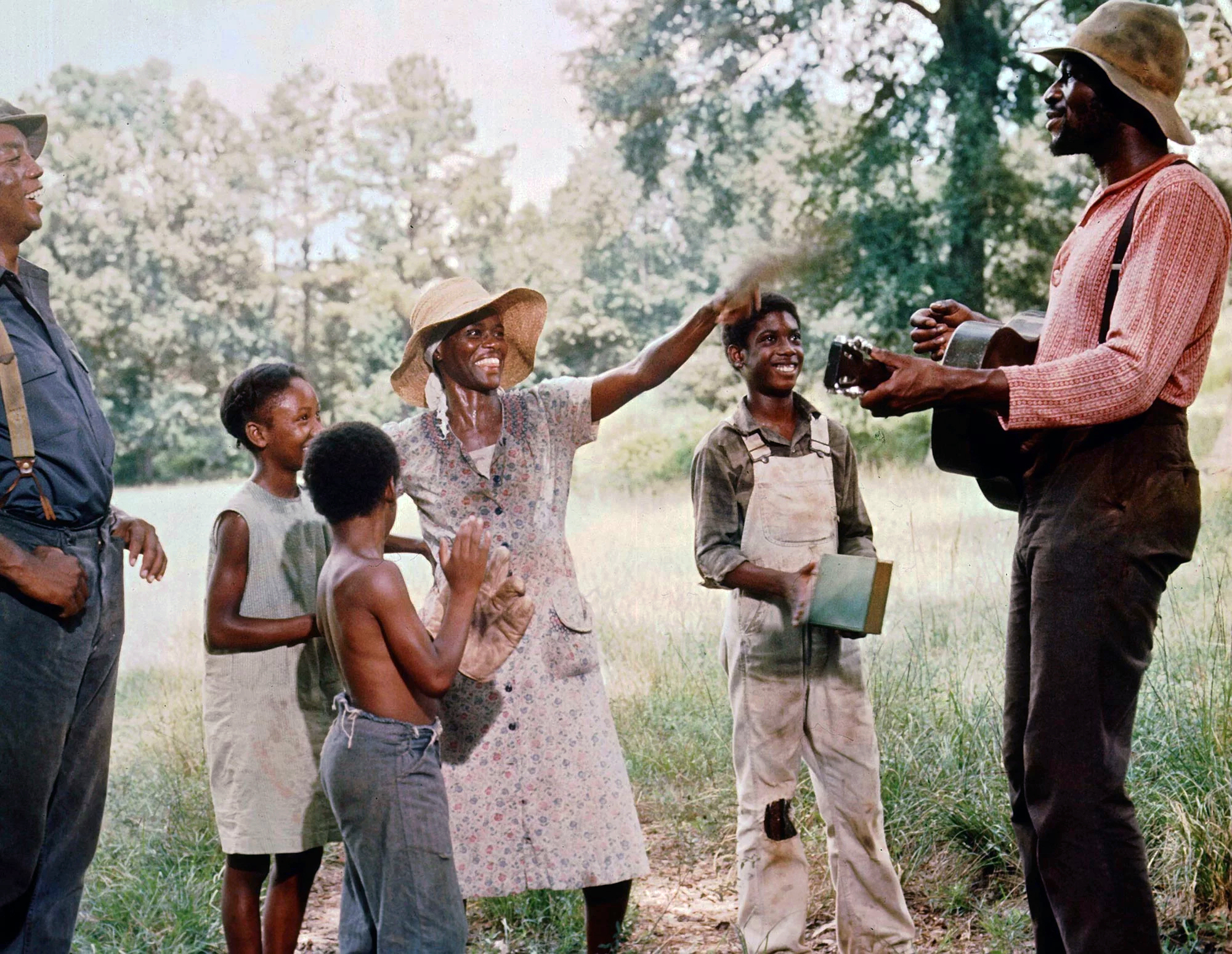
Sounder (1972)
Cicely Tyson and Paul Winfield shine as a sharecropper couple trying to get by during the Great Depression in the rural South. Directed by Martin Ritt, the story follows the family’s pre-teen son (played by Kevin Hooks) as he is thrust into becoming the "man of the family.” Critic Stanley Kaufman wrote that Ritt "is one of the most underrated American directors, superbly competent and quietly imaginative," and this understated brilliance and love for the humanity of ordinary folks is on glorious and moving display in Sounder. Taj Mahal both acted in the film and composed the score.

Stop Making Sense (1984)
The seminal New York-born rock/new wave/punk/post-punk band, the Talking Heads, were captured at the height of their powers in this now iconic concert film. Led by their charismatic frontman David Byrne, the Talking Heads tear through some of their most famous songs in this tight 88-minute performance. Selections include: ”Once in a Lifetime,” “Burning Down the House,” “Psycho Killer,” “Life During Wartime” and, from Chris Frantz and Tina Weymouth’s side project, the Tom Tom Club, a spirited rendition of “Genius of Love.” Nearly as inventive visually as it is sonically, the film is directed by Jonathan Demme who, wisely, keeps his camera tightly focused on the stage, leaving the music and band members (and the members’ own unique theatrics) to speak completely for themselves. Leonard Maltin has called Stop Making Sense, “one of the greatest rock movies ever made.” It is infectious and the quintessential get-up-and-dance experience.
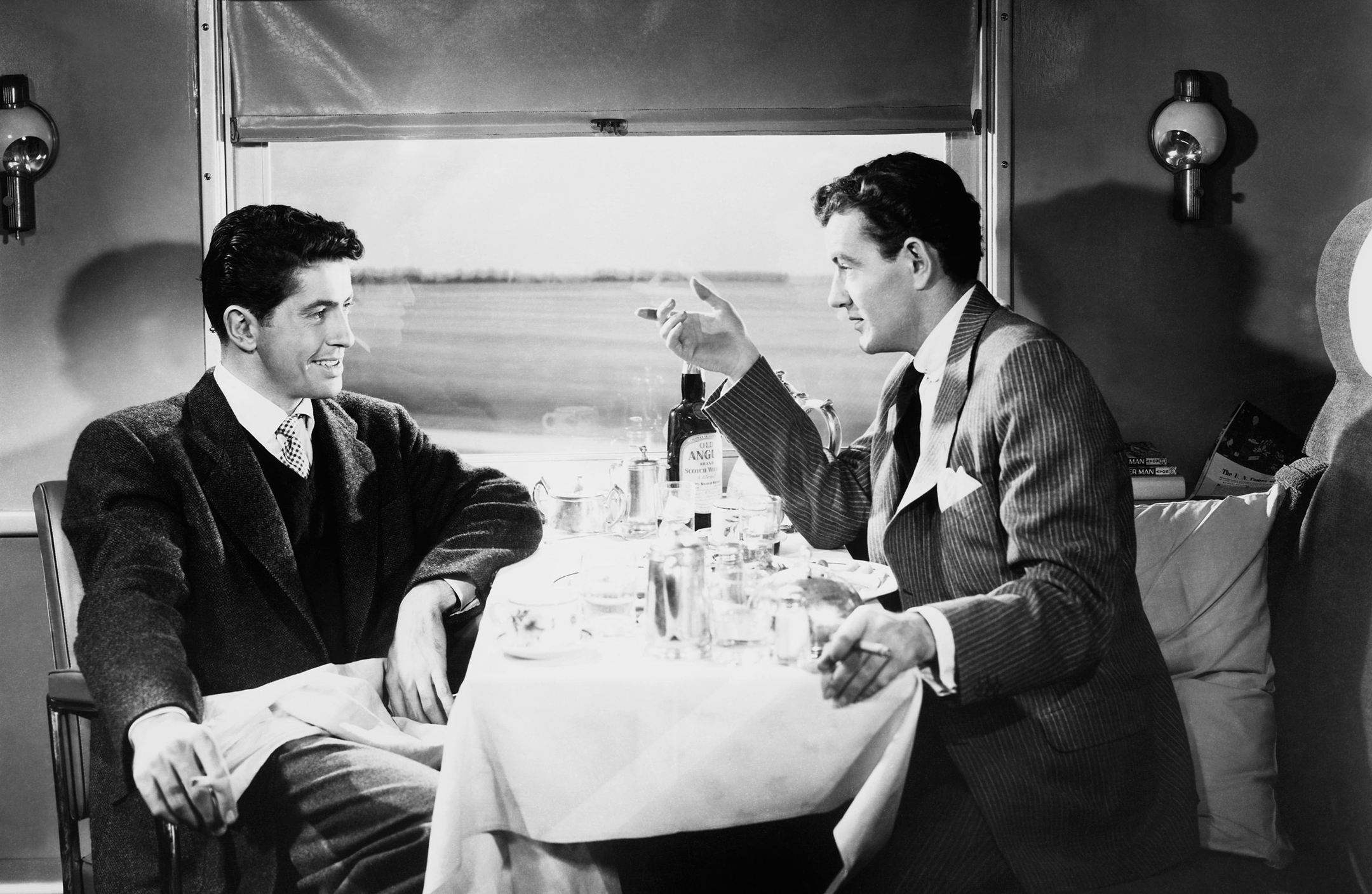
Strangers on a Train (1951)
Wildly imitated but never topped, this riveting 1951 Hitchcock classic tells of two men who, having met on the titular train, hatch a plan to “swap” murders, each killing someone the other knows and, thereby, giving the other an air-tight alibi. Farley Granger thinks the whole plan a joke while Robert Walker subsequently commits a murder and demands Granger keep his part of the deal. This thriller contains strong supporting performances by Marion Lorne, Ruth Roman and Patricia Hitchcock and, of course, by the Master of Suspense’s signature, extraordinary visuals: from a tense tennis match to a wild, out-of-control merry-go-round finale, with a monogrammed cigarette lighter serving as one of Hitchcock’s trademark “MacGuffins.”

WALL•E (2008)
Wowing critics and audiences of all ages alike, Pixar Animation Studios has had an unrivaled run of cinematic masterpieces, including the marvelously unique WALL•E (2008). Fresh off the monster hit Finding Nemo(2003), director Andrew Stanton created an incredible blend of animation, science fiction, ecological cautionary tale, and a charming robot love story. It is the tale of a lovable, lonely trash-collecting robot, WALL•E (standing for Waste Allocation Load Lifter: Earth Class), who, one day, meets, quite literally, his Eve. A triumph even by Pixar standards, the film uses skillful animation, imaginative set design (and remarkably little dialogue) to craft two deeply affecting characters who transcend their “mechanics” to tell a universal story of friendship and love. Comic relief is provided by M-O (Microbe Obliterator), a truly obsessed neat freak cleaning robot ever on the search for “foreign contaminants.” The film won the Oscar in 2009 for Outstanding Animated Feature.

The Watermelon Woman (1996)
This is the first feature film by Cheryl Dunye, one of the most important of African American, queer and lesbian directors. The director herself stars as Cheryl, a 20-something lesbian struggling to make a documentary about Fae Richards, a beautiful and elusive 1930s actress popularly known as The Watermelon Woman. The title of the film is a nod to Melvin Van Peebles’ 1970 The Watermelon Man. In Watermelon Woman, the aspiring director explores the erasure of Black women from film history, as it dovetails with her own exploration of her identity as a Black lesbian seeking love and validation. The film was a new queer cinema landmark. Of why she became a filmmaker, Dunye, during a 2018 interview at Indiana University, recalls attending a screening of She’s Gotta Have It in Philadelphia and the follow-up Q&A with director Spike Lee. Many in the audience planned to slam Lee over his controversial sexualized female protagonist. Lee answered that it was his film and he will represent the characters as he wishes, and he noted that if you wanted to change how African American women are represented, go make your own film. Dunye took that suggestion, and we are the richer for that decision. The film was restored by the UCLA Film and Television Archive.
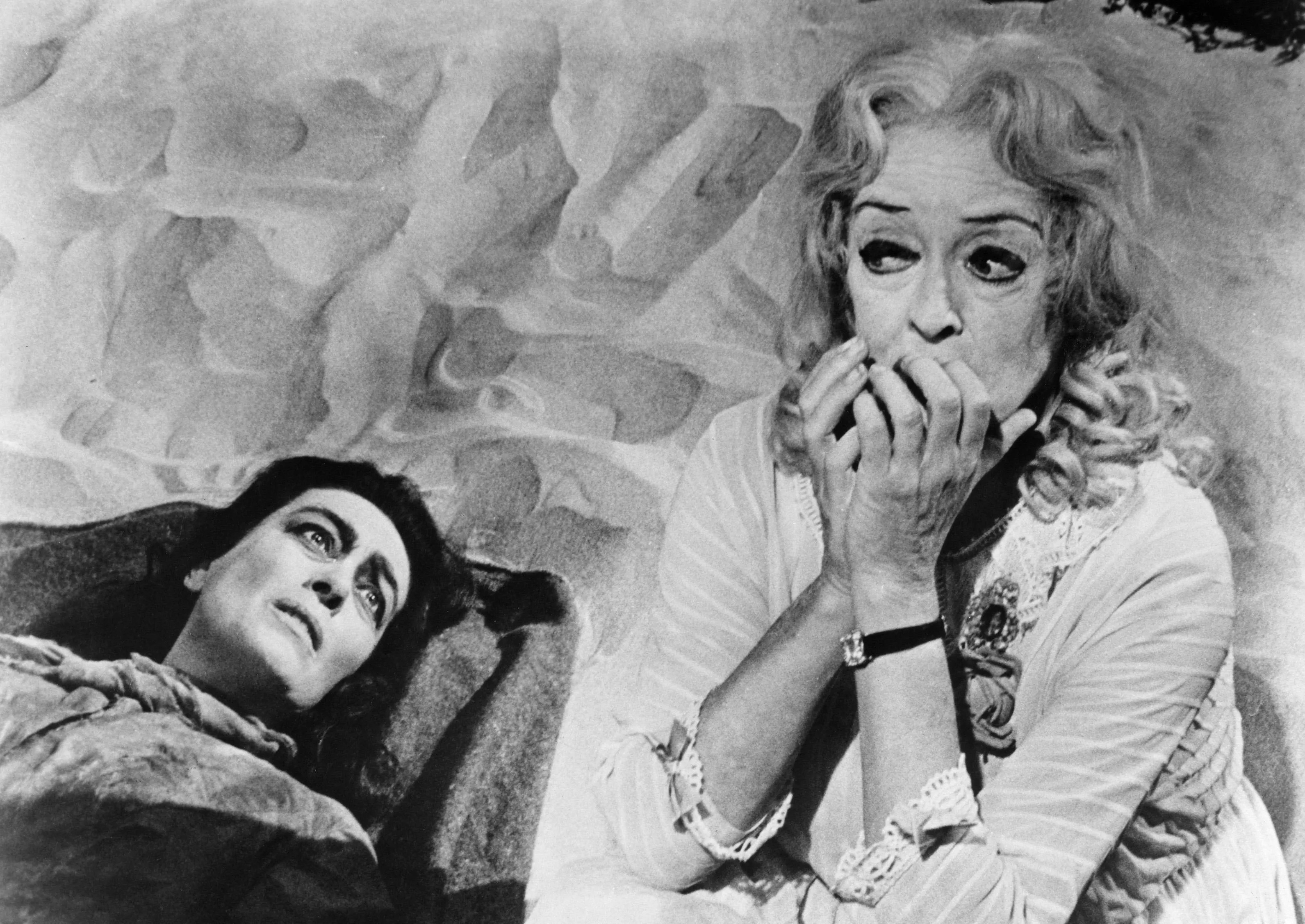
What Ever Happened to Baby Jane? (1962)
Despite a memorable, long-running feud, two of classic cinema’s greatest grand dames united for the first, and only, time in this 1962 horror dark comedy which delves into the redundant worlds of fading film stardom and the macabre. Directed by Robert Aldrich, Baby Jane recounts the tattered lives of two now aged former stars: the dominating Baby Jane (played by Bette Davis) and her disabled sister Blanche (played by Joan Crawford) as they live out their lives in a decaying mansion, loathing one another as Jane torments Blanche. The film, even today, remains vivid and often uncomfortably terrifying. Along with showcasing two powerhouse actresses, Baby Jane ignited — for better or worse — the “psycho-biddy” subgenre: films featuring older female stars in similar, grand ghoul enterprises.
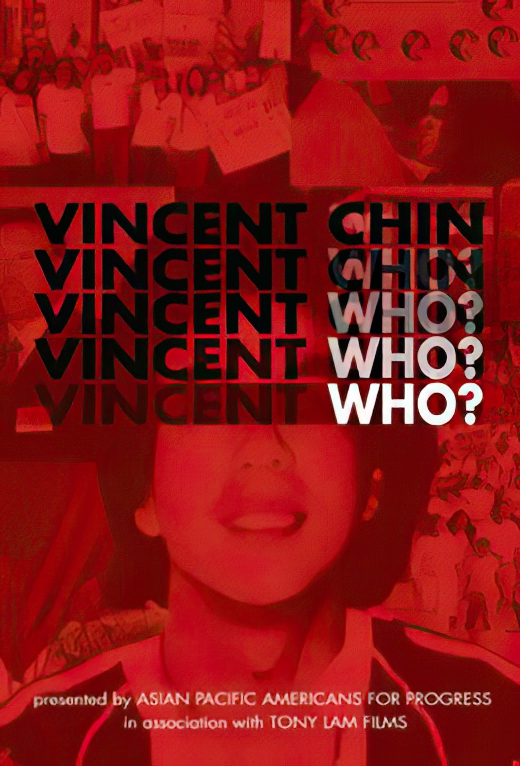
Who Killed Vincent Chin? (1987)
In 1982, Vincent Chin, a 27-year old Chinese American, was beaten to death with a baseball bat in Detroit by two white auto workers. Detroit during that period was a cauldron of racism against Asian Americans, amid the decline of the U.S. auto industry as Americans elected to buy Japanese cars. Those who killed Chin likely assumed he was Japanese. In the end, the two men were found guilty of manslaughter but given probated sentences and served no jail time. Directors Christine Choy and Renee Tajima-Peña’s Academy Award-nominated documentary examines this appalling miscarriage of justice and the multiple issues it raises including how irresponsible media can increase the risk of violence against ethnic minority communities. According to co-director Choy, the film’s key elements involve: (1) this being one of the very first civil rights case involving an Asian American (2) how the case mobilized many Asian Americans in the country, (3) Though the Chin side lost the case but also raised an incredible amount of consciousness about the civil rights issue involving all people of color and (4) The ultimate question of why the system failed and what have we learned from this? The film was restored by The Academy Film Archive and The Film Foundation.
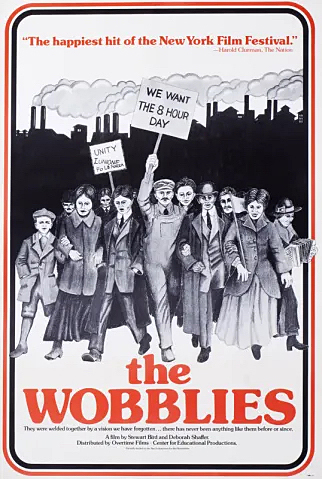
The Wobblies (1979)
“Solidarity! All for One and One for All!” Founded in Chicago in 1905, the Industrial Workers of the World (IWW) took to organizing unskilled workers into one big union and changed the course of American history. This compelling documentary of the IWW (or “The Wobblies” as they were known) tells the story of workers in factories, sawmills, wheat fields, forests, mines and on the docks as they organize and demand better wages, healthcare, overtime pay and safer working conditions. In some respects, men and women, Black and white, skilled and unskilled workers joining a union and speaking their minds seems so long ago, but in other ways, the film mirrors today’s headlines, depicting a nation torn by corporate greed. Filmmakers Deborah Shaffer and Stewart Bird weave history, archival film footage, interviews with former workers (now in their 80s and 90s), cartoons, original art, and classic Wobbly songs (many written by Joe Hill) to pay tribute to the legacy of these rebels who paved the way and risked their lives for the many of the rights that we still have today. The film was restored by the Museum of Modern Art.
About the National Film Registry
Under the terms of the National Film Preservation Act, each year the Librarian of Congress names to the National Film Registry 25 motion pictures that are “culturally, historically or aesthetically” significant. The films must be at least 10 years old. More information about the National Film Registry can be found at loc.gov/film.
The Librarian makes the annual registry selections after conferring with the distinguished members of the National Film Preservation Board and a cadre of Library specialists. Also considered were more than 6,100 titles nominated by the public. Nominations for next yearwill be accepted through Aug. 15, 2022.
In addition to advising the Librarian of Congress on the annual selection of titles to the National Film Registry, the board provides counsel on national preservation planning policy.
Many titles named to the registry have already been preserved by the copyright holders, filmmakers or other archives. In cases where a selected title has not already been preserved, the Library of Congress National Audio-Visual Conservation Center works to ensure that the film will be preserved by some entity and available for future generations, either through the Library’s motion picture preservation program or through collaborative ventures with other archives, motion picture studios and independent filmmakers.
The center is located at the Library’s Packard Campus in Culpeper, Virginia, a state-of-the-art facility where the nation’s library acquires, preserves and provides access to the world’s largest and most comprehensive collection of films, television programs, radio broadcasts and sound recordings (loc.gov/avconservation/). It is home to more than 9.2 million collection items.
The Library of Congress is the world’s largest library, offering access to the creative record of the United States — and extensive materials from around the world — both on-site and online. It is the main research arm of the U.S. Congress and the home of the U.S. Copyright Office. Explore collections, reference services and other programs and plan a visit at loc.gov; access the official site for U.S. federal legislative information at congress.gov; and register creative works of authorship at copyright.gov.






